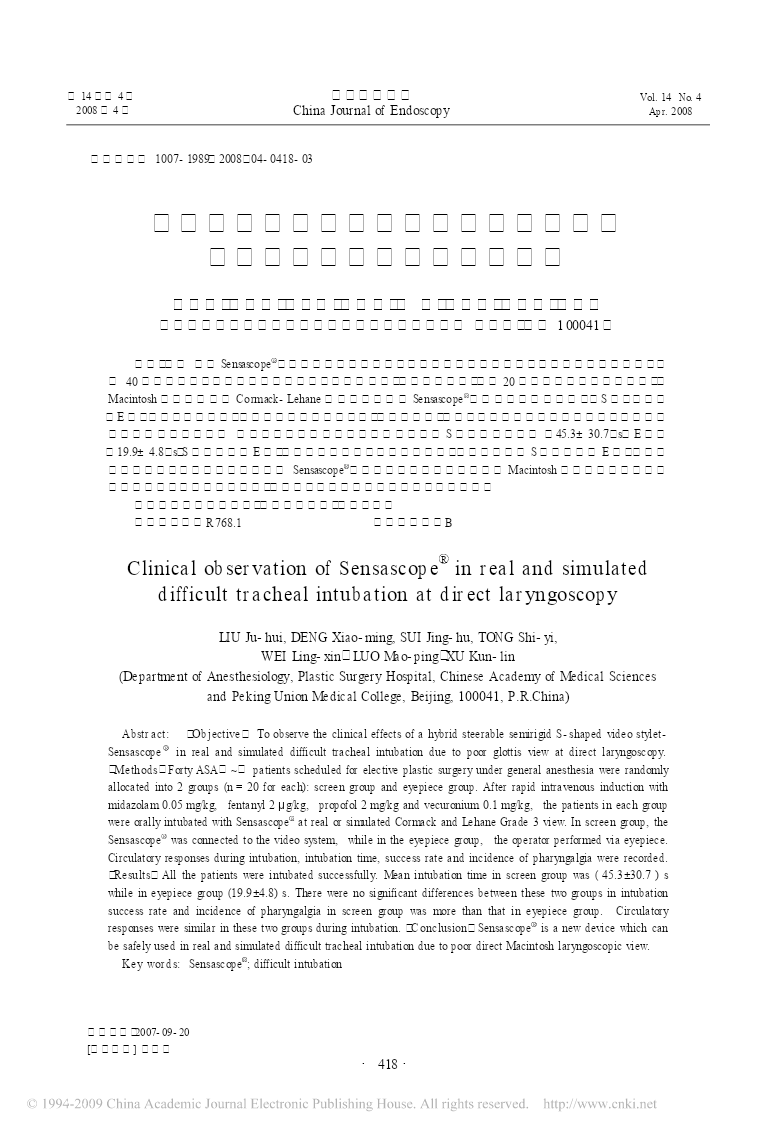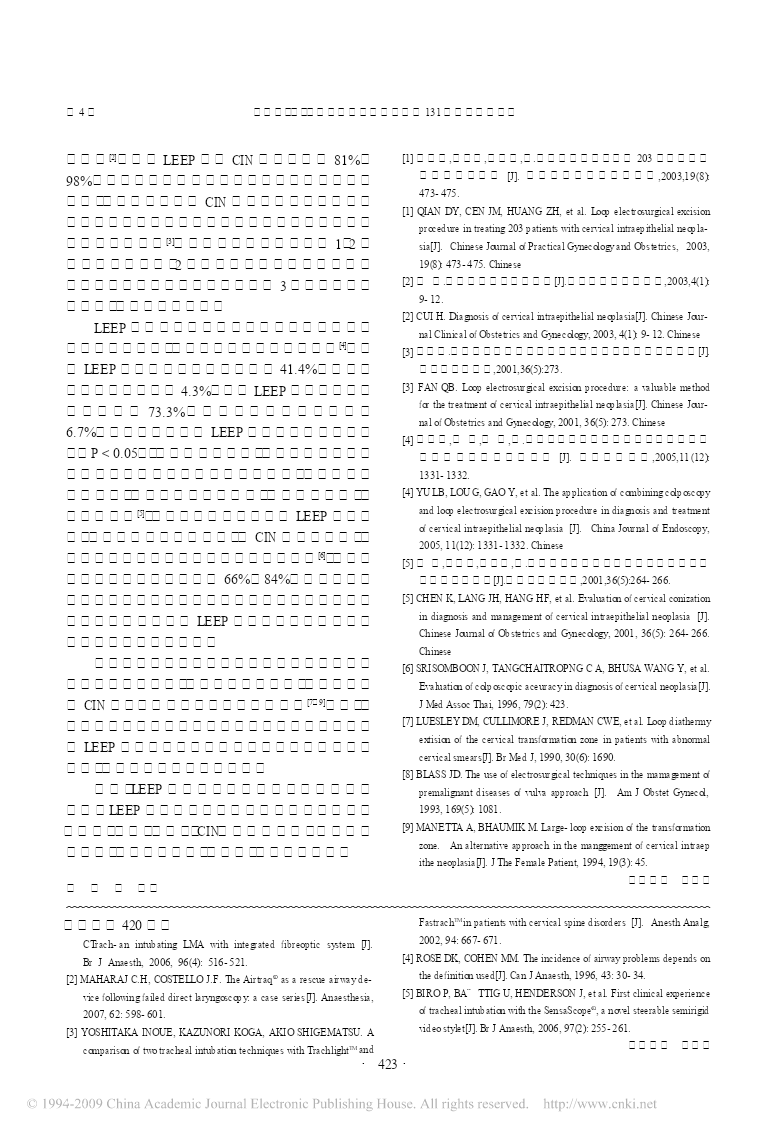
纤维支气管镜用于直接喉镜暴露困难和模拟暴露困难患者.pdf

qw****27




在线预览结束,喜欢就下载吧,查找使用更方便
相关资料

纤维支气管镜用于直接喉镜暴露困难和模拟暴露困难患者.pdf
第14卷第4期中国内镜杂志Vol.14No.42008年4月ChinaJournalofEndoscopyApr.2008文章编号:1007-1989(2008)04-0418-03纤维支气管镜用于直接喉镜暴露困难和模拟暴露困难患者的临床观察刘具会,邓晓明,隋静湖,佟世义,杨冬,魏灵欣,罗茂萍,胥琨琳(中国医学科学院中国协和医科大学整形外科医院麻醉科,北京100041)摘要:目的观察SensascopeR纤维镜引导插管用于直接喉镜暴露困难和模拟暴露困难患者的临床效果。方法40例行择期整形外科手术的气管插管

支撑喉镜下声门暴露困难的相关影像学测量参数研究.docx
支撑喉镜下声门暴露困难的相关影像学测量参数研究[摘要]目的探讨支撑喉镜手术影响声门暴露的相关因素为术前评估提供参考。方法整群收集2013年12月―2014年6月在该院行全麻支撑喉镜手术的声嘶患者共51例按术中声门暴露情况分为声门暴露困难组和对照组术前测量头颈仰伸侧位X片下的影像参数(LIMDMAMCDMHMDIHMDTMDSMD)分析这些参数与声门暴露的相关性。结果LIMD和MA在DLE组和对照组的(x±s)分别为:LIMD:(4.82±.72)和(4

支撑喉镜显微手术声门暴露困难相关因素分析的综述报告.docx
支撑喉镜显微手术声门暴露困难相关因素分析的综述报告喉镜显微手术是一种常见的手术方式,可用于声门下狭窄、声带息肉、癌变等疾病的治疗。然而,在手术过程中,有时会出现声门暴露困难的情况,影响手术质量和效果。本文将对支撑喉镜显微手术声门暴露困难相关因素进行综述分析,并探讨一些解决方案。一、手术操作因素1.操作者技术水平不足:手术者对于喉镜和其他设备的掌握程度越低,就越难在手术中确保声门的完全暴露。在手术操作中,手术者需要进行耐心细致的操作,特别是在调整喉镜的角度和位置时,要用力适当,并且熟悉设备的使用方法和操作规

支撑喉镜下喉部暴露困难相关多因素分析及术前预测.docx
支撑喉镜下喉部暴露困难相关多因素分析及术前预测标题:支撑喉镜下喉部暴露困难相关多因素分析及术前预测引言:喉镜下喉部暴露困难是一种在声带手术中常见的问题,它可能导致手术失败、延长手术时间以及增加并发症的风险。然而,目前对于喉镜下喉部暴露困难的预测和因素分析方面的研究相对较少。因此,本文旨在对支撑喉镜下喉部暴露困难所涉及的多因素进行分析,并探讨术前预测方法,以提高喉镜下声带手术的成功率和安全性。一、喉镜下喉部暴露困难的影响因素分析1.非解剖因素:a.年龄:随着年龄的增长,软组织退化、关节僵化等问题容易导致喉部

支撑喉镜下声门暴露困难的相关影像学测量参数研究.docx
支撑喉镜下声门暴露困难的相关影像学测量参数研究[摘要]目的探讨支撑喉镜手术影响声门暴露的相关因素为术前评估提供参考。方法整群收集2013年12月―2014年6月在该院行全麻支撑喉镜手术的声嘶患者共51例按术中声门暴露情况分为声门暴露困难组和对照组术前测量头颈仰伸侧位X片下的影像参数(LIMDMAMCDMHMDIHMDTMDSMD)分析这些参数与声门暴露的相关性。结果LIMD和MA在DLE组和对照组的(x±s)分别为:LIMD:(4.82±.72)和(4
